The following is an excerpt from the Ontario Economic Update 2016 which highlights, among other facts, all the great aspects of Toronto’s economic forecast and into 2017. I know, journalists will tell you that “if it BLEEDS, it LEADS” but I thought I take the risk of sharing some positive news!! ENJOY!!
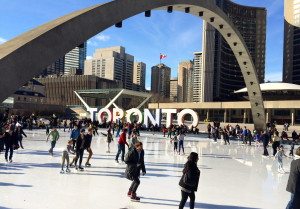 “The high-profile Toronto housing market has led all regions with the largest average price increase of over nine percent in 2015. The two index measures for Toronto are showing gains of eight to nine percent. Toronto’s sales-to-new listings and sales-to-active listings ratios are the highest in several years, which correlates well with substantial price increases. Active listings are the lowest since the recession and the flow of new listings is only three percent higher than last year, compared to a 10 percent sales increase. Supply is an issue affecting not only prices, but at this pace, it will constrain sales.
“The high-profile Toronto housing market has led all regions with the largest average price increase of over nine percent in 2015. The two index measures for Toronto are showing gains of eight to nine percent. Toronto’s sales-to-new listings and sales-to-active listings ratios are the highest in several years, which correlates well with substantial price increases. Active listings are the lowest since the recession and the flow of new listings is only three percent higher than last year, compared to a 10 percent sales increase. Supply is an issue affecting not only prices, but at this pace, it will constrain sales.
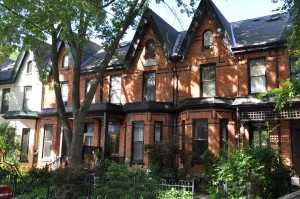 With one of the more robust economies in Ontario, Toronto’s housing market is seen posting further gains in 2016 and 2017. Sales will climb as long as the supply response gains momentum. There is more upside to prices than forecast if listings do not respond and languish at the current low pace. The average sale price will breach $700,000 during 2016 and $750,000 during 2017 though the annual averages will be lower. New construction will also climb but it can only meet part of the market’s supply needs.
With one of the more robust economies in Ontario, Toronto’s housing market is seen posting further gains in 2016 and 2017. Sales will climb as long as the supply response gains momentum. There is more upside to prices than forecast if listings do not respond and languish at the current low pace. The average sale price will breach $700,000 during 2016 and $750,000 during 2017 though the annual averages will be lower. New construction will also climb but it can only meet part of the market’s supply needs.
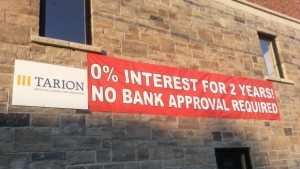 The underlying premise in our forecast is that low mortgage rates, combined with employment and income growth, will generate more housing activity, despite worsening affordability conditions and mortgage rates edging higher. The homes and buildings people want to own are in limited supply and are located on land that cannot be reproduced. As urbanization continues to intensify, land values will continue to appreciate.
The underlying premise in our forecast is that low mortgage rates, combined with employment and income growth, will generate more housing activity, despite worsening affordability conditions and mortgage rates edging higher. The homes and buildings people want to own are in limited supply and are located on land that cannot be reproduced. As urbanization continues to intensify, land values will continue to appreciate.
In the Toronto ER, housing unit sales via the Multiple Listing Service (MLS®) are forecast to rise 6.4 percent in 2016 and 4.3 percent in 2017 following estimated growth of 8.3 percent in 2015. The average MLS® sale price is forecast to rise 8.7 percent in 2016 and 7.3 percent in 2017, following an estimated gain of 9.2 percent in 2015.
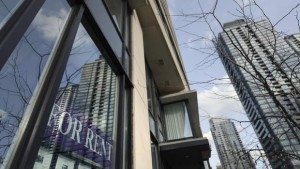 Residential building permits are forecast to increase 10.7 percent in 2016 and 4.3 percent in 2017, following estimated growth of 19.5 percent in 2015. The Toronto CMA housing forecast is highly similar to the ER forecast. Most of the uplift in residential construction is centred in multi-unit buildings in the Toronto CMA, which are up 43 percent through the first 10 months of 2015. There is upside potential in this forecast because a considerable amount of pent-up household formation accumulated since the recession seven years ago.
Residential building permits are forecast to increase 10.7 percent in 2016 and 4.3 percent in 2017, following estimated growth of 19.5 percent in 2015. The Toronto CMA housing forecast is highly similar to the ER forecast. Most of the uplift in residential construction is centred in multi-unit buildings in the Toronto CMA, which are up 43 percent through the first 10 months of 2015. There is upside potential in this forecast because a considerable amount of pent-up household formation accumulated since the recession seven years ago.
 Renovation spending, which is larger than spending on new construction, is forecast to grow at a good clip, averaging around 7.5 percent annually in current dollars and 5.0 percent in 2007 dollars through 2017. In addition to the aging of the housing stock, renovation spending tends to increase at a faster pace when the housing cycle is in an expansion phase.
Renovation spending, which is larger than spending on new construction, is forecast to grow at a good clip, averaging around 7.5 percent annually in current dollars and 5.0 percent in 2007 dollars through 2017. In addition to the aging of the housing stock, renovation spending tends to increase at a faster pace when the housing cycle is in an expansion phase.
Investment in non-residential building construction in the Toronto CMA continues to rise and was up almost nine percent through the third quarter of 2015 compared to last year. The increase is spread over institutional, government, commercial, and industrial buildings. Non-residential building permits are up 22 percent on the same basis. Permit growth, an indicator of near-term investment spending, is mainly in institutional, government and industrial projects. Some examples of recently awarded construction contracts for non-residential buildings include the Milton District Hospital expansion, the GO Transit East Rail Maintenance Facility in Whitby, and the ErinoakKids’ centres in Brampton, Mississauga, and Oakville.
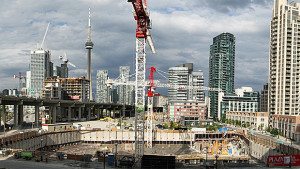 Engineering construction will continue in Toronto, with the utilities and transportation industries investing heavily in a number of major projects. These include Phase II of the Highway 407 extension, the Eglinton Crosstown and Sheppard Ave. East light rapid transit projects, and the refurbishment of the Darlington nuclear generating station.
Engineering construction will continue in Toronto, with the utilities and transportation industries investing heavily in a number of major projects. These include Phase II of the Highway 407 extension, the Eglinton Crosstown and Sheppard Ave. East light rapid transit projects, and the refurbishment of the Darlington nuclear generating station.
Non-residential building permits in the Toronto CMA are forecast to decline about three percent in 2016, following a 22 percent jump in 2015. Higher activity is projected for 2017 and could be higher than forecast, depending on the federal government’s infrastructure initiatives.
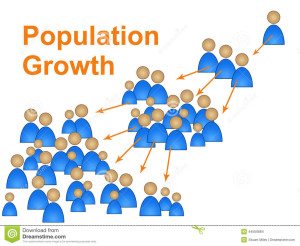 Population growth in the Toronto CMA is forecast to grow at 1.5 percent annually in 2016 and 2017, up from estimated growth of 1.4 percent in 2015. Immigration levels will remain high and the largest source of growth, while fewer temporary foreign workers will dampen growth. Net interprovincial outflow looks to ease with Alberta’s recession. A larger net outflow of population to other regions in the province by a growing portion of retirees is expected. Toronto’s growth with remain above the provincial average and well above all other regions in the province”
Population growth in the Toronto CMA is forecast to grow at 1.5 percent annually in 2016 and 2017, up from estimated growth of 1.4 percent in 2015. Immigration levels will remain high and the largest source of growth, while fewer temporary foreign workers will dampen growth. Net interprovincial outflow looks to ease with Alberta’s recession. A larger net outflow of population to other regions in the province by a growing portion of retirees is expected. Toronto’s growth with remain above the provincial average and well above all other regions in the province”
The region underwent an economic resurgence in 2015 and will continue to perform strongly over the next two years.
The region leads all regions in average residential sale price increases, with 9.2 growth in 2015.
The region now accounts for nearly 47 percent of the provincial population.
For the Full report click the Download link.
If you (or someone you know), are looking for a Realtor who cares MORE about focusing on you, your concerns, goals and the successful purchase or sale of YOUR unique home, than they care about their volume of transactions and awards, please let me know the best way for me to connect, as I would love to offer my highly personal service. Contrary to that old expression, not only IS this business, but it IS personal! And, please, I encourage you to ask me any questions you may have about this post. I value your input and appreciate the time you took to read it.
